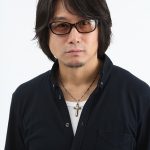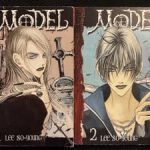Before Bottle George, a new stop-motion animated short film, debuted in the United States, Anime News Network spoke with writer Akihiro Nishino about the making of the film, its deeper meaning, and its connection to Nishino’s past.
Nishino initially gained notoriety in a completely unrelated field, while being well-known now as a children’s book author and illustrator. “I started as a manzai comedian and then started appearing on popular TV programs,” Nishino said. But I came to the realization that as long as I was constrained by the Japanese language, I wouldn’t be able to grow much larger, even if I kept doing TV. That meant I would have to use nonverbal cues or do something that would be simpler to translate. […] I thus began painting after deciding that it might be the best course of action.”

It wasn’t easy at first, though, despite the clear artistic talent on exhibit in his numerous best-selling works. “I discovered I wasn’t very adept at picture book writing when I first started. Everything was a little confusing. I therefore reasoned that I wouldn’t be able to break into the sector if I carried on in this manner.” But he found he had one thing going for him that many other published writers did not: time. “I realized that it takes a lot of time to create a book—and that authors have to make a living in the first place, so they can’t take that long to create one piece of work,” Nishino said. “I became aware that I was still frequently appearing on TV at that time. In addition, Put another way, I wasn’t entirely impoverished even though I wasn’t getting paid for writing picture books.” This gave Nishino the freedom to take his time finishing his works, which allowed him to pack an incredible amount of detail onto every page.
About ten years ago, Nishino first expressed interest in adapting his works into a motion picture. “When I was in the middle of writing my fourth picture book, Poupelle of Chimney Town, I realized that I wanted to make a movie,” Nishino shared with me. He therefore approached his drawings with the perspective of a filmmaker, creating images that were almost storyboards. “I felt like, if I made the pictures movie-esque, people would come and say, ‘Hey, this would make a good film!'” Poupelle of Chimney Town received a STUDIO4ºC-animated movie in 2020, thus it appears to have been successful.
Regarding Bottle George, all began with a fortuitous encounter between Nishino and director Daisuke “Dice” Tsutsumi during a film festival during which Nishino was giving a guest lecture. “Director Tsutsumi and I talked and hit it off, went out for drinks, had a good time, and started talking about doing something fun together—and that’s exactly what happened in the end,” Nishino said with a grin. Naturally, things weren’t exactly so easy to begin with, and Nishino didn’t begin writing on what would eventually become Bottle George until around six months later.
“My initial thought was to create a picture book about Bottle George. But one day, Director Tsutsumi asked if I would like to try telling the narrative in stop-motion animation instead. I felt that would be a lot of fun, even though it seemed like a lot of work. Thus, I told Director Tsutsumi, “Let’s get started.”
According to Nishino, “the story changed shape during production.” “At the beginning, it was more of a story about ‘second attempts’—essentially about when the first thing you tried to do didn’t go well, and you gave up, but then you picked yourself back up and took on a different challenge.”
Naturally, this is a reflection of Nishino’s own life’s trajectory. “I began my career as a comic before moving into television. I pulled out of that because I didn’t think it was right for me. However, I then began creating picture books and videos, which was my second endeavor. Though this concept is still present in part in the finished picture, it is no longer the primary focus. “We made the decision halfway through to concentrate the attention a little more on the environment—on the monster that overindulged in alcohol and became imprisoned in a bottle. to turn it into an addiction narrative.”
His friend’s battles with addiction were a particular source of inspiration for this shift in direction. Because we were close friends, we spent a lot of time getting to know one another. Rather, we got together once a month to go out to dinner and do other activities, but we always made an effort to support one another in reaching our goals. With regard to their addiction, I attempted that, but nothing improved. They would promise to stop, but I had the impression that as soon as I looked away, they would pick back up.”
“This had been going on for a long time and I realized I had been misunderstanding what addiction is—that it’s not a simple problem that can be solved by saying, ‘Let’s do our best,'” Nishino went on, “It’s a really problematic sickness. And I understand that no one individual can heal it on their own.” At that moment, Nishino realized that Bottle George’s narrative and his friend’s experience were identical.
This gave the movie an additional level of complexity. Happy endings are practically a guarantee in a film directed at children, written by a children’s author. “I thought that if I gave this story a really happy ending, it would give people the misunderstanding that addiction can be cured by telling people to try their best, and that’s not the case,” Nishino complained. A positive conclusion was the best he could hope for. “I ended the film making sure family and friends were there for [the one suffering from addiction].”
Ultimately, Nishino wants viewers of the movie to come to the same understanding of the nature of addiction as he did. “I believe that a large number of individuals are ignorant of addiction and the best ways to care for those who are hooked. At first, I was unaware of it as well, so hopefully Bottle George will provoke thought in others.”



